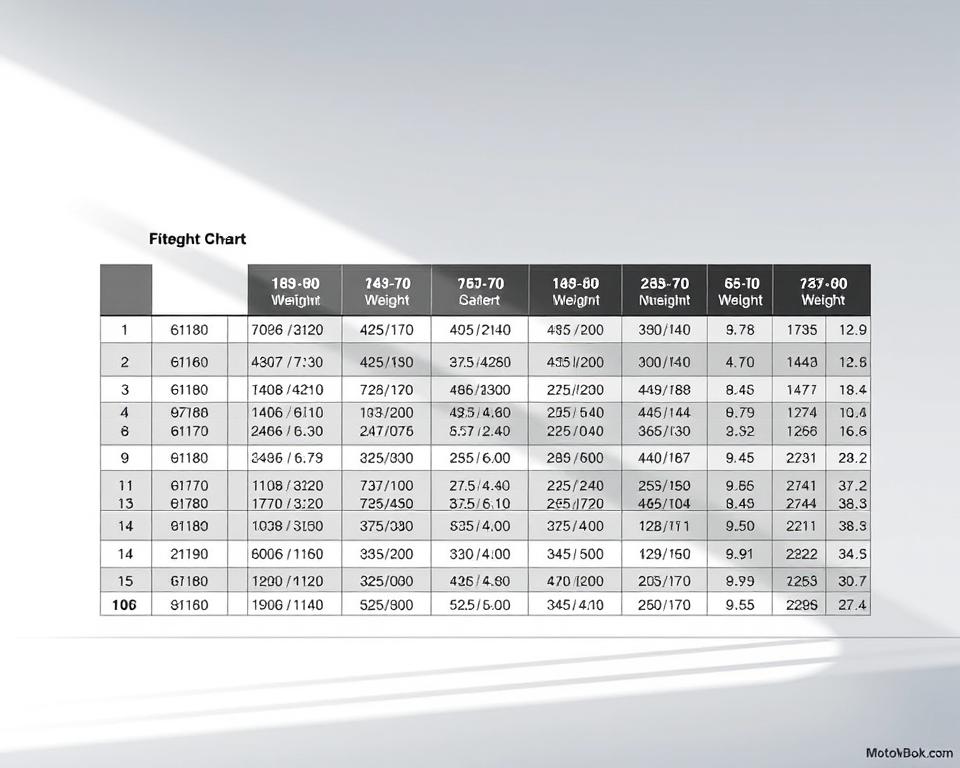Browse Aftermarket ATV Parts from American Off-Roads
Could a single upgrade transform your ride and increase your on-trail confidence?
Count on American Off-Roads, a U.S.-based source for used RZR seats for sale plus speedy and rider-first help. We guide riders to shop smarter with a curated catalog aimed at real needs and real results.
Browse trusted gear such as SuperATV polycarbonate windshields, chromoly Rhino 2.0 axles, high-clearance A-arms, synthetic-rope winches with wireless remotes, and tires for mud, all-terrain, or extreme grip.
Quickly view category pages to match parts to your vehicle and riding goals. Our filters, specs, and friendly guidance make it easy to move from planning to install without delays.
Begin your build using trail-tested components for durability and performance so each ride feels more capable and fun.

Key Takeaways
- American Off-Roads offers a curated selection and rider-focused support.
- SuperATV adds durable windshields, axles, suspension, winches, and tires to your toolkit.
- Filters and straightforward navigation reveal compatible items fast.
- Stocked essentials reduce wait time from purchase to install.
- Performance upgrades refine power delivery, handling, and overall confidence.
Shop by Vehicle: Polaris, Can-Am, Honda, Kawasaki, Yamaha, CFMOTO and More
Pick your make and model to quickly find parts that fit—no guesswork. We group listings by brand/model so upgrades match factory design and mounts.
Upgrades for Polaris RZR / RZR 1000
Locate RZR-focused kits—bolt-on suspension, driveline support, and terrain-matched tires. Kits for the rzr 1000 cut install time and lower the need for custom work.
Essentials for Can-Am Maverick / X3
Maverick riders can prioritize reliability and cockpit comfort. Essentials include stronger axles, upgraded shocks, and vented windshields to improve long days.
CFMOTO & Big-Four Fitment Options
Each brand differs in frame layout and clearance. Our fitment notes call out those design choices so you pick components that respect geometry and keep mounting straightforward.
Choosing parts for UTV vs ATV and riding style
Understand the platform: side-by-sides require different suspension, doors, and storage than single-seat ATVs. Match parts to payload, terrain, and riding habits.
- Platform pages group tires, suspension, windshields, and driveline by vehicle.
- Trail, mud, dune, and work guides align upgrades to real needs.
- Model-specific kits reduce fabrication and get you back to riding faster.
American Off-Roads guides riders to the right component combos so each upgrade adds clear value.
ATV Aftermarket Parts
Assemble a complete ride using durable, proper-fit gear from driveline to windshield. We collect components so you can plan cohesive upgrades without guesswork.
Performance Packages: power/suspension/driveline
Kick off with matched packages that pair clutching, suspension tuning, and driveline strength. Because kits are engineered to complement each other, delivery and handling improve together.
Pick high-clearance SuperATV A-arms for more ground clearance while maintaining steering geometry. Heavy-duty Rhino 2.0 axles use chromoly and special heat treatment for extra durability under load.
Armor First: doors, bumpers, skid plates
Shield high-impact zones using bumpers, doors, tree kickers, and skid plates. Bolt-on armor trims repair time and supports harder riding with less worry.
Visibility Upgrades: windshields/mirrors/lighting
Boost visibility via hard-coated polycarbonate windshields, mirrors, and upgraded lighting for longer, safer trail days. Wireless synthetic-rope winches deliver dependable recovery when required.
- Use matched driveline/clutch kits to build power and control.
- Select suspension parts to add clearance while keeping handling intact.
- Reinforce axles and hubs where real abuse happens.
- Look for bolt-on solutions to cut time in the garage.
| Part |
Main Benefit |
Example |
Approx. Install Time |
| Driveline Kit |
Better torque handling |
Rhino 2.0 axle set |
2–4 hours |
| Suspension System |
More clearance and control |
SuperATV high-clearance A-arms |
2–6 hours |
| Armor |
Impact protection |
Skid plates & bumpers |
1–3 hours |
| Sightlines |
Better sightlines and night utility |
Hard-coated polycarbonate windshield |
~0.5–1.5 hrs |
Pro tip: Align parts to terrain and balance performance with maintenance. Need help choosing accessories or kits? Our team provides rider-first guidance to maximize value and durability.
Categories to Upgrade Your Ride
Find the right upgrades quickly by browsing focused categories that match your riding style and terrain. American Off-Roads organizes each area so you can compare features, clearance, and price before you buy.
Tires: All-Terrain, Mud, and Trail Tread Choices
Choose tires by terrain using clear tread guidance. Choose Warrior for balanced trails, Terminator for deep mud, Intimidator for aggressive bite.
Wheels & Spacers — stance/handling/durability
Adjust stance and stability using wheels/spacers (e.g., Polaris 4/156) to refine track width and scrub radius.
Suspension: A-Arms, Lift Kits, and Shocks for Tough Conditions
Pick A-arms, lifts, and shocks to increase clearance while preserving precise steering. Use matched components for predictable performance on rough trails.
Windshields, Doors, Mirrors, and Storage
Evaluate full, flip, and half windshields for airflow, noise, and visibility. Outfit doors, lower valances, and body armor for added protection without excess weight.
Mirror upgrades boost rear and side visibility in tight trees or open desert. Add storage boxes, racks, and in-cab solutions to keep essentials secure on long rides.
Recovery setups: mounts & winches
Use mounts and kits to place lights, audio, and navigation within easy reach. Equip synthetic-rope winches with wireless remotes sized to your vehicle for confident recovery.
- Quickly shop category pages to compare products and accessories side by side.
- Filter by fitment, clearance, and budget to narrow picks quickly.
Featured Trusted Brands
Picking smart starts with brands known for fitment and real performance.
SuperATV stands out for rider-tested designs that focus on practical gains. The range includes hard-coated polycarbonate windshields, high-clearance boxed/adjustable A-arms, and Rhino 2.0 chromoly axles.
Synthetic-rope, wireless winches deliver reliable recovery. Tires like Warrior, Terminator, and Intimidator give clear tread choices for different terrain. Many SuperATV parts are bolt-on to cut install time and add value.
Complementary Brands and Accessories
Our curation favors brands that complement each other for mix-and-match success.
- Explore SuperATV for trail performance and durability.
- Parts span suspension, windshields, axles, tires, winches, and protective body gear.
- Compare accessories and evaluate warranty, value, and install complexity before you buy.
We test gear on trail and spotlight best-in-class picks so you can build confidently with fewer surprises.
Fitment Confidence: Year/Make/Model Tools and Install Tips
Use fitment tools to decide upgrades quickly and cut install-time surprises.
Start with the Year/Make/Model selector to confirm exact or universal fit before adding to cart. Product pages clearly state compatibility and list whether an item is model-specific or broad-fit.
Vehicle selectors for exact or universal fit
Check product fitment details to confirm hardware, torque specs, and re-torque intervals. A quick review saves hours and keeps you confident.
Model-specific design cuts install time
Many designs from SuperATV and others are bolt-on and need only basic tools. Model-specific layouts reduce install time and custom work.
- Confirm bolt pattern/offset/mount points before ordering.
- Check notes for included hardware and torque values.
- Pre-stage tools, threadlocker, and routing plans for wiring to save time.
| Fitment Step |
Reason |
Expected Result |
Quick Tip |
| Y/M/M selector |
Ensures exact compatibility |
Fewer returns and faster install |
Use before adding to cart |
| Product fitment notes |
Shows hardware & specs |
Proper tools and torque on hand |
Verify included bolts |
| Model-specific design |
Reduces fabrication |
Install completes in less time |
Plan wiring routes in advance |
Serious Rider Pathways: performance & upgrades
Begin with foundational reinforcements so performance doesn’t outpace reliability.
Axles, Clutching, and Driveline Reinforcement
Start by strengthening driveline pieces—carrier bearings, clutching, axles. SuperATV Rhino 2.0 axles use chromoly and advanced heat treatment for added durability on rocky or muddy trails.
Upgrading these components first helps larger tires and extra weight age well. If you skip this step, you risk breakage and higher long-term costs.
Balancing power, weight, and handling
Match suspension/tuning to your goals. Adjustable A-arms let you recenter alignment and gain tire clearance without hurting steering feel.
On polaris rzr/rzr 1000 and can-am maverick builds, pair tire size, gear reduction, and clutch tuning for best results.
- Choose matched kits that preserve geometry/handling balance.
- Offset added weight (doors/armor/winches) with clutch/power upgrades to retain response.
- Stage changes and bring spares such as belts/hardware to limit downtime.
American Off-Roads outlines logical upgrade sequences so you don’t overspend or sacrifice drivability. Ask for platform-specific tips and recommended kits to reach your goals.
Armor & durability across conditions
A solid armor plan protects critical systems so you ride longer and wrench less.
Our picks emphasize protection without unnecessary weight. Doors, tree kickers, bumpers, nerf bars, and skids from SuperATV are bolt-on and trail-tested.
Pick protection by terrain and service needs. Choose thicker skid plates for rock gardens and lighter valances for dusty desert runs.
- Add front/rear bumpers to spread impact into the frame and shield radiators/winches.
- Choose full doors or lower valances to guard cab and side body from brush.
- Tree kickers and nerf bars deflect stumps before they reach vulnerable points.
| Armor Type |
Primary Benefit |
Best Use |
| Front/Rear Bumpers |
Frame load distribution |
Rock and high-impact trails |
| Doors / Valances |
Protects cab/side body |
Wooded and brushy conditions |
| Underbody Skids |
Underbody gouge protection |
Rocks, ruts, heavy debris |
Confirm torque after initial rides and recheck periodically. Ensure upgrades don’t block service access or tire clearance. Build a layered defense—armor plus smart line choice—so you ride more and repair less.
Need help ranking parts for best protection per dollar? Our team will recommend SuperATV and other proven options for your terrain and budget.
Visibility, Comfort, and Communication for Longer Rides
Simplify long runs by improving visibility, adding audio, and using smart mounts for secure access.
Mirrors and Windshields for Trail and Open Desert
Choose full, flip, or half windshields to fine-tune airflow, dust control, and visibility for your climate and trails.
SuperATV windshields use hard-coated polycarbonate for scratch resistance and long-term clarity.
Side and rear mirrors raise awareness in tight woods and open desert transitions.
Soundbars & audio gear to improve the experience
Soundbars and radios make long rides more enjoyable and help keep communication clear when max time on the trail stretches past sunset.
Use sturdy mounts to position soundbars, GPS, and radios within reach. Quick-release hardware enables fast swaps between open and enclosed setups.
- Add LED whips and dome lighting to return safely at night.
- Route power/signal wiring neatly to prevent chafe and noise.
- Balance weight/placement to prevent rattles and preserve handling.
| Add-On |
Benefit |
Tip |
| Full/flip/half windshields |
Control airflow and dust |
Pick flip for variable airflow |
| Side/rear mirrors |
Improved awareness |
Adjust before each ride |
| Soundbar & mounts |
Comfort plus clear comms |
Pick vibration-damping mounts |
| LED whips/dome lights |
Better night visibility/safety |
Power via fused circuits |
American Off-Roads recommends proven UTV accessories that improve comfort while keeping installs simple. If you need help choosing mounts/whips/windshield styles for your side-by-side, our team will recommend reliable, easy-fit options.
Deals & Clearance — save on proven parts
Save big on proven upgrades during seasonal clearances that put quality gear within reach.
Seasonal discounts and time-limited promos help you stretch the budget. Events spotlight trending products and value bundles across popular categories.
Seasonal Bestsellers and Limited-Time Offers
Browse rotating deals to find price drops on tires/windshields/soundbars/mirrors/recovery. Because windows are limited, stock moves quickly—act when a match appears.
- Use clearance to score proven parts and accessories at sharp prices while inventory lasts.
- Watch limited-time offers on tires/windshields/recovery gear to finish your build for less.
- Leverage bundles to maximize savings on matched components that install together.
- Check open-box or last-chance items for extra discounts on quality gear.
- Revisit often—American Off-Roads updates deals so you can catch rollbacks on superatv categories.
| Type |
Typical Items |
Why It Helps |
| Closeout |
Mirrors/soundbars/add-ons |
Deep discounts on proven stock |
| Seasonal Promo |
Tires/windshields |
Prep for riding season and save |
| Bundle Deals |
Matched kits |
Lower per-component cost |
Use savings to round out safety and maintenance items so you ride more and worry less. Schedule purchases around trips so you’re ready when the trail calls.
New & trending products to watch
Fresh gear arrivals spotlight smart upgrades that riders actually use on the trail.
View the latest products, including new wheels and tires that refine stance and traction without heavy fabrication. Expect SuperATV to release refreshed Rhino 2.0 axles, updated windshields, and tested CVT belts.
Look for kits that bundle mounts/hardware for clean installs and fewer shop runs. Flag modular storage: boxes/racks that secure cargo and reduce rattles.
Trending add-ons (whips, rock lights, switch packs) raise night visibility and style. Look for limited-run drops and clearance tied to recent model-year changes for polaris rzr and other platforms.
- Set brands side by side to match budget with terrain needs.
- Add promising products to your shortlist so you’re ready before peak riding weekends.
- Review fit notes to confirm hardware and prevent install surprises.
| Category |
Reason |
Sample |
| Wheels & Spacers |
Refines stance, improves handling |
Refreshed wheel designs |
| Driveline & Belts |
Load-ready durability |
Rhino 2.0 axles, CVT belts |
| Storage/Kits |
Cleaner installs, secure cargo |
Modular racks and bolt-on kits |
Community — ride more, wrench smarter
Discover community-driven content that helps you ride more often and wrench with confidence.
Events, tips & enthusiast content
American Off-Roads supports the community with ride ideas, install tips, and event highlights. We share seasonal guides to prep trips and maintain builds with less guesswork.
Follow event highlights and ride reports to spark ideas for your next destination.
Explore how enthusiasts outfit machines, from recovery to comfort. Explore SuperATV-focused how-tos that translate directly to real-world upgrades.
- Tap into our content to ride more, wrench smarter, and get more out of every weekend.
- Share your ride stories and setups to help other riders learn new tricks.
- Build a life around responsible off-roading—prep checklists, trail etiquette, and trip planning.
Keep connected for routes, product updates, and platform-specific tips. American Off-Roads supports the community with accessible guidance and practical insights.
Shopping services that put riders first
Fast shipping and clear returns help upgrades arrive on schedule and ready to install.
Fast fulfillment, secure packaging, and straightforward returns keep you focused on the ride. U.S. shipping is quick, and we track each order to delivery.
Shop confidently—orders ship in protective packaging and arrive ready to install.
- Quick U.S. shipping plus tracking gives you delivery ETAs in your account.
- Easy returns with step-by-step instructions for swapping parts or accessories.
- Accurate fitment checks lower returns and add peace of mind pre-checkout.
Support from riders who know the products
Because our team rides and installs these products, answers are practical and quick.
- Ask about torque specs, break-in tips, and installation pointers.
- Get recommendations for storage, wiring routes, and mounting strategies.
- Keep purchase history in your account to plan future upgrades and shop smarter.
The Final Word
Bring your project together with bolt-on solutions that maximize trail time and minimize garage hours.
SuperATV delivers across major upgrade paths (windshields, suspension, axles, winches, doors, tires) so you can choose proven, lasting parts.
American Off-Roads helps riders shop smart—from wheels and whips to UTV accessories and protective doors—with install tips that simplify the job.
Shop our curated catalog to secure the products you need, join the community for enthusiast-tested advice, and plan upgrades that suit changing conditions.
Build with confidence, ride purposefully, and enjoy off-road life fully.










